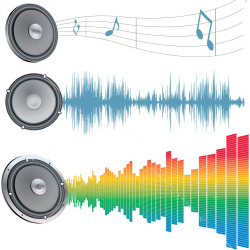Some time ago I was on a trip to Japan, visiting some key customers, and I picked up on something that has been brewing in the back of my mind ever since. Maybe the light bulb went on because I was in a different country with a different culture, but here was the thing…
I was asked several times by several people: “what’s the maximum number of channels your wireless system can operate simultaneously?”
That’s when the “something” in the back of my mind crystallized: we have a tendency to boil everything down to a single specification. The most readily obvious example that comes to mind is the number of diagonal inches for TV screens. Sure, the size is important, but I think it’s too easy to focus only on that and not pay attention to other things.
Perhaps a savy TV shopper asks about HD factors such as “is it true 1080P?” Again, it’s another spec that may be important, but not as important as other factors. What about the quality of the picture? Unfortunately, picture quality, while there are many objective factors that can influence it, is largely a subjective thing.
And this is the crux of the issue, I think.
While it’s easy to parrot a question like “how many inches?” it’s more difficult to comprehend the finer points. And when it comes to subjective evaluation, we can be wary of showing our ignorance in front of “experts”. (Well, some aren’t wary, but that’s another subject altogether.)
Loudspeakers
Since the debut of “modern” line array technology more than a decade ago, every loudspeaker manufacturer has been faced with the question—“Do you make a line array?”—even when in many cases, a line array is not the right solution for a particular application.
Now, line array has become a marketing buzzword in addition to a loudspeaker design approach, and the majority of manufacturers offer them. Prior to this change, questions about loudspeakers boiled down to “What is the frequency response?” or “How many watts can it handle?” (I still cringe when I hear people confusing the amount of watts a loudspeaker can handle with how loud it will go.)
These glossy buzzwords also overlooked finer points like efficiency, dispersion, impedance curve, etc. in determining how the loudspeaker might actually perform.
Which brings me to…
Amplifiers
This one is obvious: “How many watts?” Never mind that actual power is largely a factor of the load conditions. And what about the power supply? Remember those claims by an amplifier company popular in the 1980s? Somehow this manufacturer had found the “magic formula” for generating a (for the time) huge number of watts very efficiently.
But as it turns out, the difference was more about using switching supplies before most other manufacturers had gone there. And for good reason: switching supplies were not up to the enormous task of producing large amounts of clean current continuously in an amp that would actually sound good.
Times have changed. and now we can actually do that.
But the question “How much power?” misses out on many other important factors of amplifier performance such as damping factor, peak versus continuous power, whether or not the amp puts any noise on the power line, etc.
Further, there can be a trap in asking “How light is it?” as the only consideration, assuming that amplifiers all sound the same so the lightest, smallest one is best.
The bottom line is that both weight and output power are important but other issues must be given consideration.





















